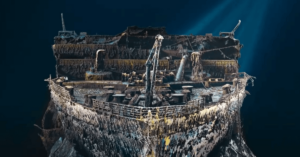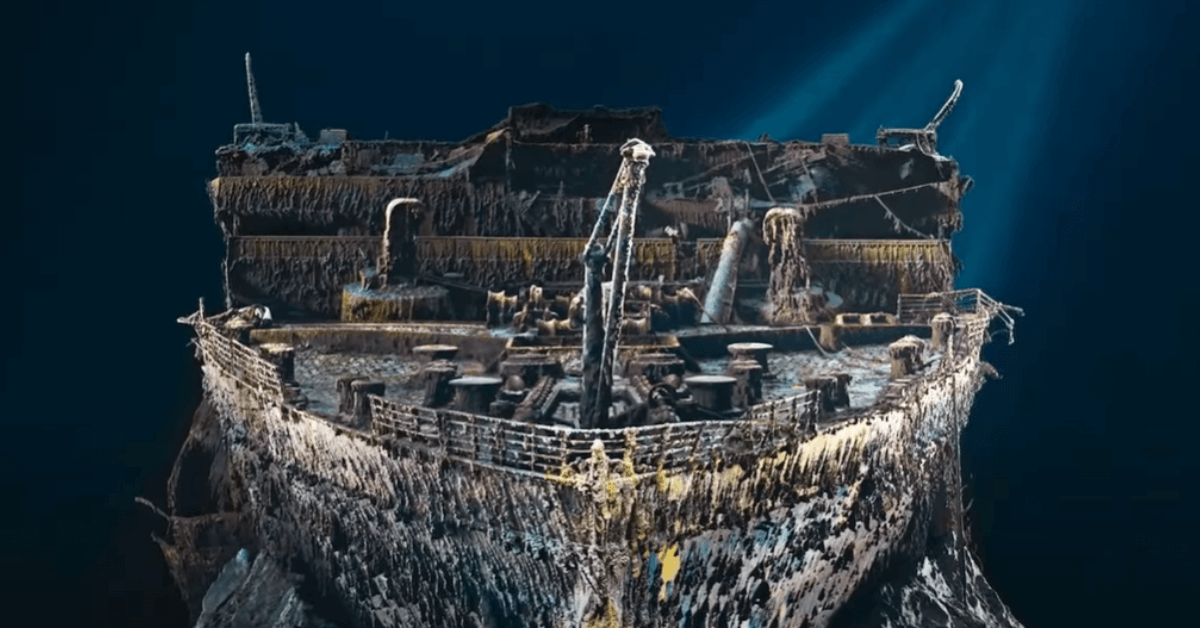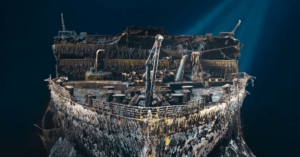
US Threatens IMO With Retaliation Over Emission Fees On US Ships
April 9, 2025
Norwegian Cruise Line Sends Two Of Its Oldest Cruise Ships To India
April 9, 2025

A high-resolution digital scan of the Titanic has offered a detailed new look into how the famous ocean liner sank in 1912, killing over 1,500 people.
The full-sized 3D model, created using more than 700,000 images, reveals how the ship broke apart and sank after hitting an iceberg during its maiden voyage.
This is the first time the entire wreck, lying 3,800 meters under the Atlantic Ocean, has been digitally recreated.
The work was carried out by deep-sea mapping company Magellan in collaboration with Atlantic Productions for a National Geographic documentary titled Titanic: The Digital Resurrection.
The detailed scan provides a full view of the wreck site, which includes the bow sitting upright on the seabed and the stern lying 600 meters away in a heap of twisted metal.
Until now, underwater submersibles could only show limited views of the wreck due to its size and the deep, dark ocean environment.
Titanic analyst Parks Stephenson, who was part of the study, explained that seeing the full wreck site helped experts understand the disaster better.
Video Credits: National Geographic/YouTube
According to him, examining the ship like a crime scene, studying every part in its original place, was key to figuring out how it all happened.
One of the most striking discoveries is a close-up of the boiler room. The digital replica shows some of the ship’s large boilers have become concave, a sign that they were still functioning when the ship sank.
The scan also shows a steam valve on the stern that remains open, evidence that steam was still moving through the ship’s power systems.
Stephenson said this might be because Chief Engineer Joseph Bell and his team kept the power from the boiler room, helping passengers safely board lifeboats.
All of them died in the tragedy, but their actions helped save many lives.
A smashed porthole, visible in the scan, backs up reports from survivors who claimed ice entered cabins during the collision. The damage seen matches stories that the iceberg struck with such force that ice scattered inside the ship.
A computer simulation has added more insight in to the scan. Experts from University College London and the University of Newcastle used Titanic’s blueprints and data like speed and direction to recreate the moment of the iceberg collision.
The simulation shows the iceberg didn’t cause large tears, but rather a series of small punctures, each roughly the size of an A4 paper, spread across six watertight compartments.
Titanic was built to stay afloat with four flooded compartments, but not six. This fine margin made the difference between survival and disaster.
As water slowly entered through these small holes, the compartments eventually flooded over, sealing the ship’s fate.
Simon Benson, a naval architecture expert involved in the study, explained that while the holes were small, they were spread across a long stretch of the ship, allowing water to enter steadily and ultimately led to the vessel’s downfall.
However, some parts of the lower bow remain buried in sediment, which means not all damage is visible in the scan. Personal belongings still lie scattered around the wreck site, reminding researchers of the lives lost.
The digital twin is so detailed that it can be projected life-size in a warehouse, allowing experts to walk alongside the ship virtually and inspect features up close.
Despite this technological leap, researchers say it will take years to fully examine every detail.
Stephenson noted that the Titanic is still revealing secrets slowly, saying that each discovery brings more questions. “She’s only giving her stories to us a little bit at a time,” he remarked.
The Titanic struck the iceberg on April 15, 1912, while travelling from Southampton, UK to New York.
References: BBC, globalnews
Source: Maritime Shipping News


